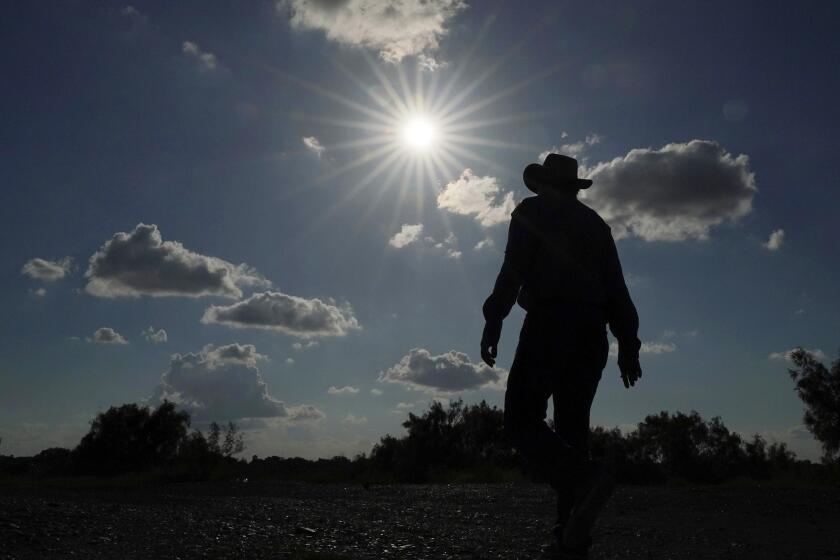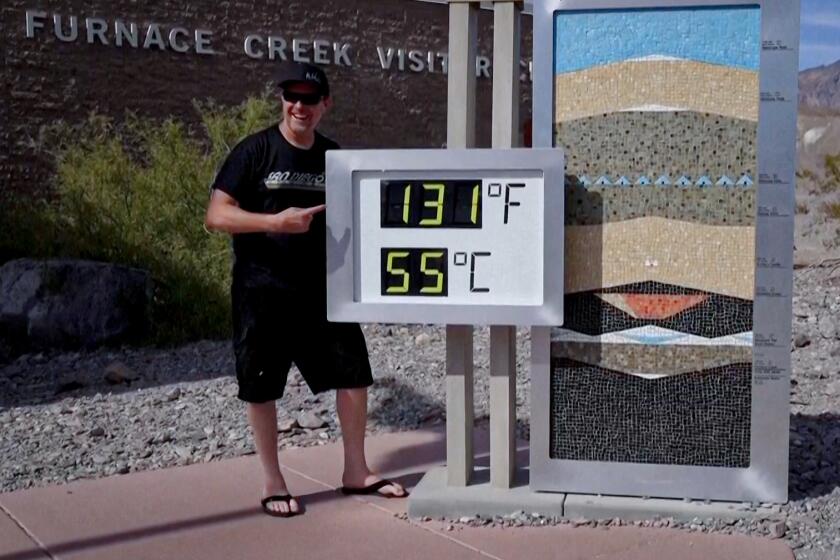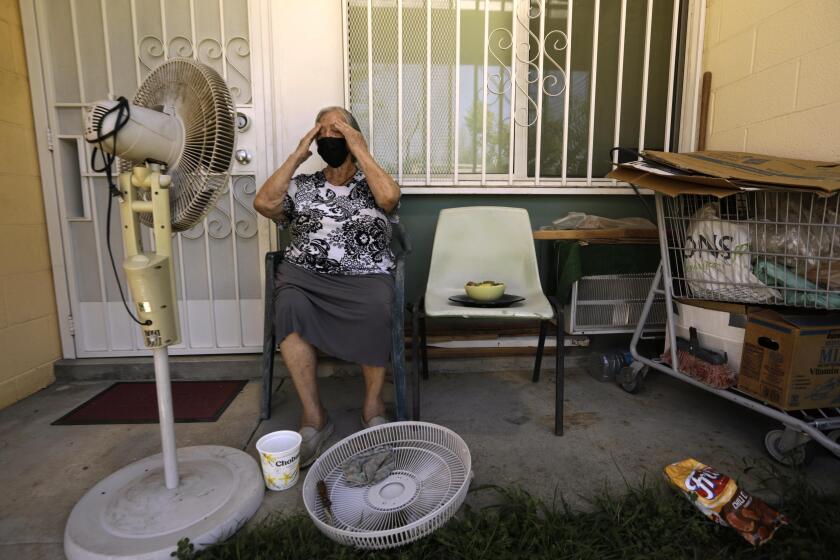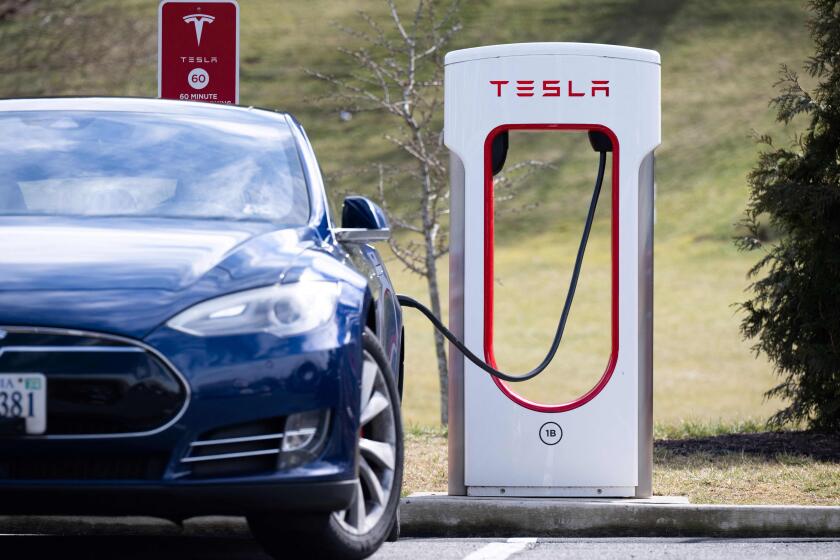Phoenix hits at least 110 degrees for 19th straight day, breaking records in worldwide heat wave
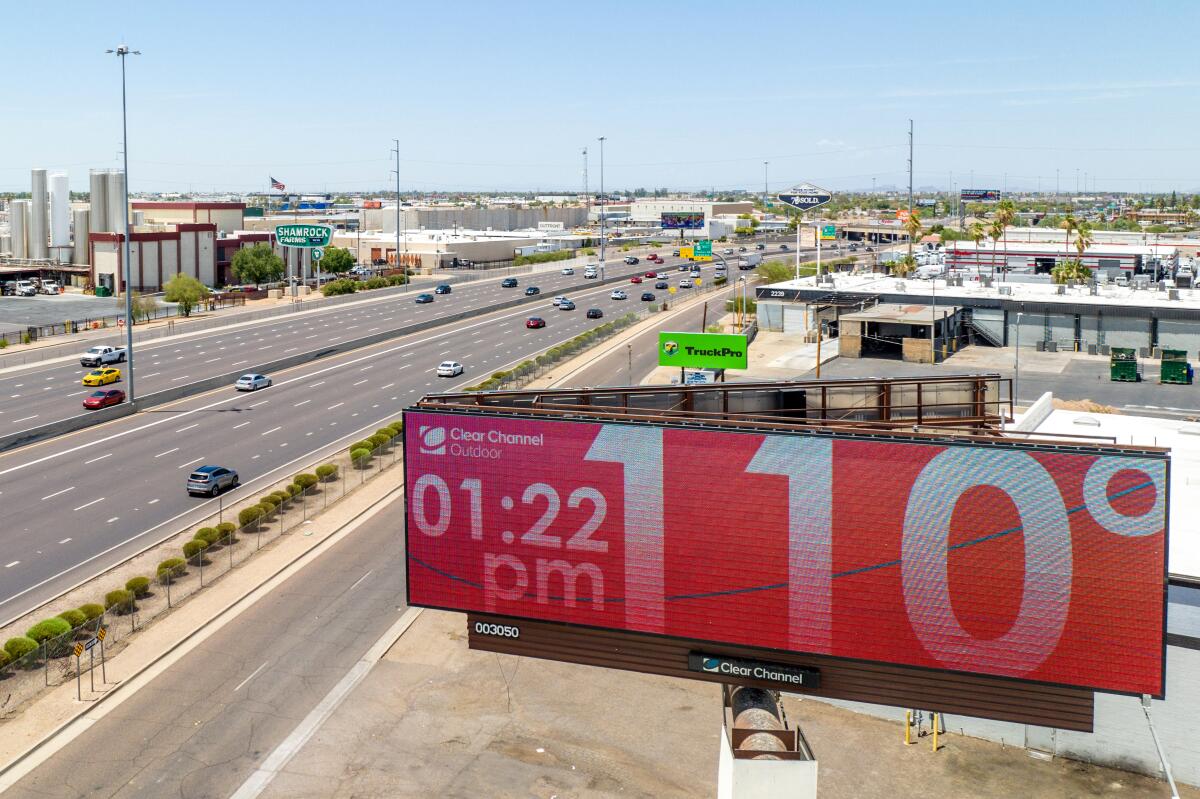
- Share via
PHOENIX — The extreme heat scorching Phoenix set a new record Tuesday, the 19th consecutive day temperatures hit at least 110 degrees Fahrenheit in a summer of suffering echoing around much of the globe.
As human-caused climate change and a newly formed El Niño are combining to shatter heat records worldwide, the Phoenix region stands apart among major metropolitan areas in the U.S.
No other major city — defined as the 25 most populous in the United States — has had any streak of 110-degree days or 90-degree nights longer than Phoenix, said weather historian Christopher Burt of the Weather Co.
National Oceanic and Atmospheric Administration climate data scientists Russ Vose and Ken Kunkel found no large cities with that streak of warming, but smaller places such as Death Valley and Needles, Calif.; and Casa Grande, Ariz., have had longer streaks. Death Valley has had an 84-day streak of 110-degree temperatures and a 47-day streak of nighttime temperatures that haven’t fallen below 90, Vose said.
With Earth breaking average heat records, L.A. and other cities face a test of their readiness plans for temperatures that can kill.
For Phoenix, it’s not only the brutal daytime highs that are deadly. The lack of a nighttime cooldown can rob people without access to air conditioning of the break from the heat that their bodies need to continue to function properly.
With Tuesday’s low of 94, the city has had nine straight days of temperatures that didn’t go below 90 at night, breaking another local record, according to National Weather Service meteorologist Matt Salerno, who called it “pretty miserable when you don’t have any recovery overnight.”
On Monday, the city set a record for the hottest overnight low temperature: 95.
Some 200 cooling and hydration centers have been set up across the metro area to cool residents, but most shut down between 4 and 7 p.m. due to staffing and funding issues.
Death Valley temperatures soared to 128 degrees Sunday, breaking the daily record of 127 degrees set in 2005 and 1972. It was expected to hit 125 on Monday.
“Long-term exposure to heat is more difficult to withstand than single hot days, especially if it is not cooling off at night enough to sleep well,” said Katharine Jacobs, director of the Center for Climate Adaptation Science and Solutions at the University of Arizona.
The last time Phoenix didn’t reach 110 degrees was June 29, when it hit 108. The record of 18 days above 110 that was tied Monday was first set in 1974, and it appeared destined to be shattered multiple times with temperatures forecast above that through the end of the week.
“This will likely be one of the most notable periods in our health record in terms of deaths and illness,” said David Hondula, chief heat officer for the city of Phoenix. “Our goal is for that not to be the case.”
Parts of Southern California could experience triple-digit temperatures in this heat wave. Here are some tips to beat the heat without air conditioning.
Phoenix’s heat wave has both long- and short-term causes, said Arizona State University’s Randy Cerveny, who coordinates weather record verification for the World Meteorological Organization.
“The long-term is the continuation of increasing temperatures in recent decades due to human influence on climate, while the short-term cause is the persistence over the last few weeks of a very strong upper-level ridge of high pressure over the western United States,” he said.
Record heat. Raging fires. What are the solutions?
Get Boiling Point, our newsletter about climate change, the environment and building a more sustainable California.
You may occasionally receive promotional content from the Los Angeles Times.
That high pressure, known as a heat dome, has been cooking the Southwest for weeks, and is even more centered on Phoenix now, said National Weather Service meteorologist Isaac Smith.
The high pressure not only brings the heat, but it also prevents cooling rain and clouds from bringing relief, Smith said. Normally, the Southwest’s monsoon season kicks in around June 15 with rain and clouds. But Phoenix has not had measurable rain since mid-March.
As EV adoption picks up in states experiencing record high temperatures, drivers are learning to protect battery health.
“Although it is always hot in the summer in Phoenix, this heat wave is intense and unrelenting,” said Jacobs. “Unfortunately, it is a harbinger of things to come given that the most reliable projected impacts of climate change are those that are directly related to the increase in global temperatures.”
More to Read
Sign up for Essential California
The most important California stories and recommendations in your inbox every morning.
You may occasionally receive promotional content from the Los Angeles Times.
